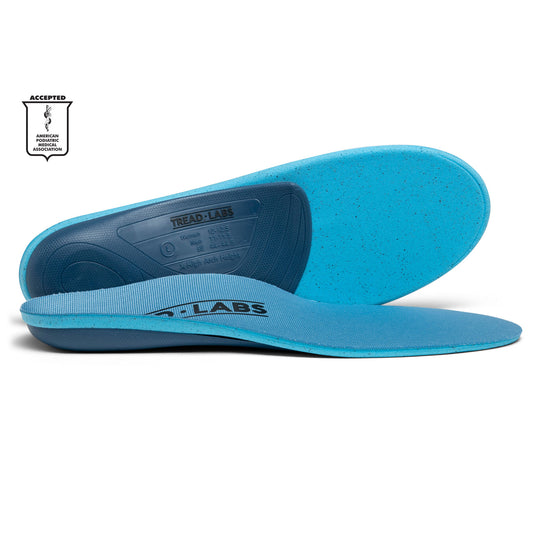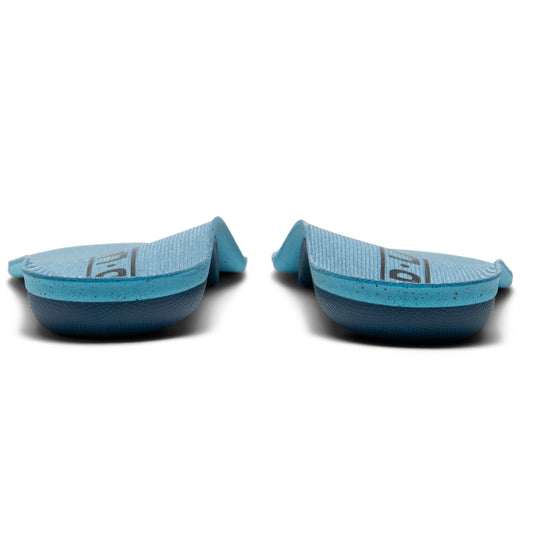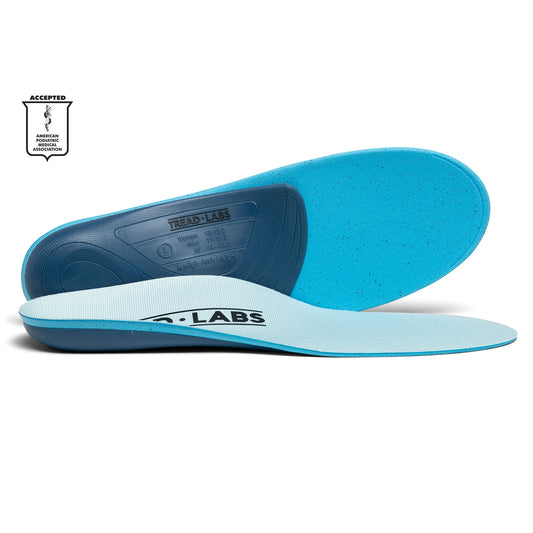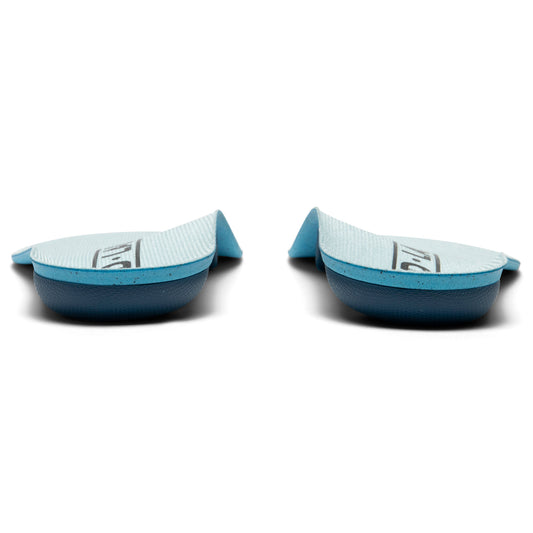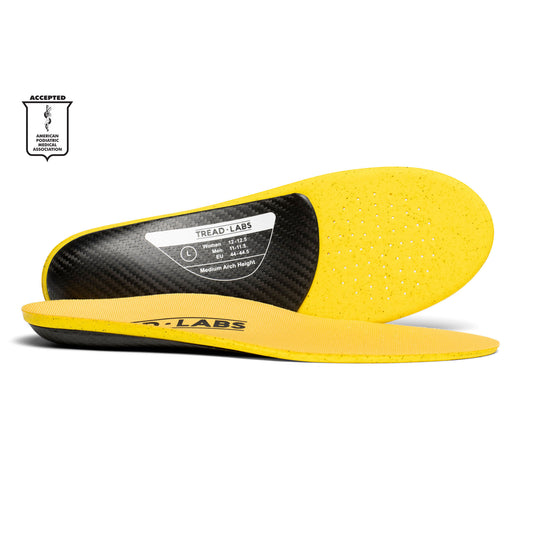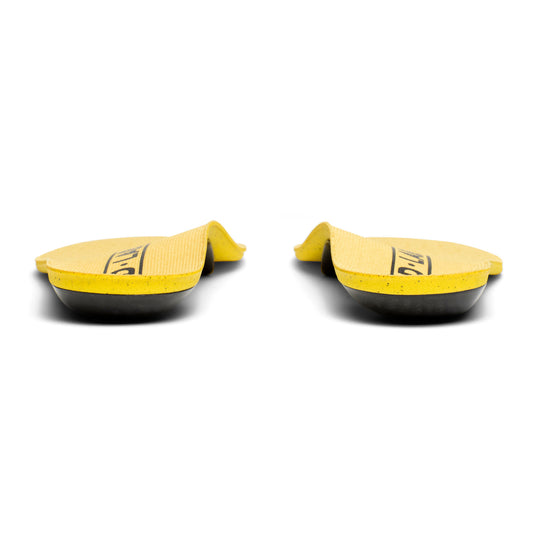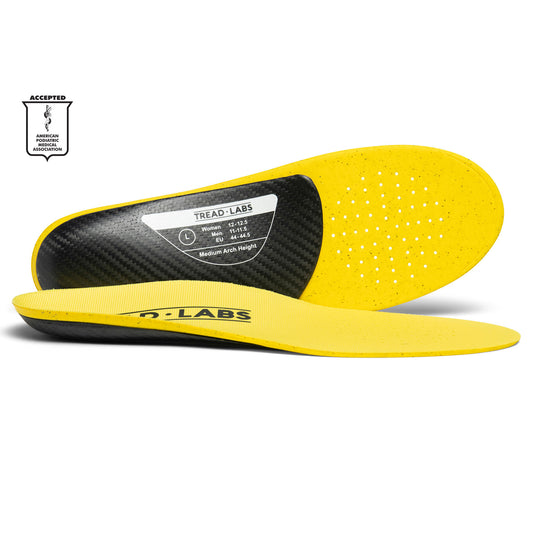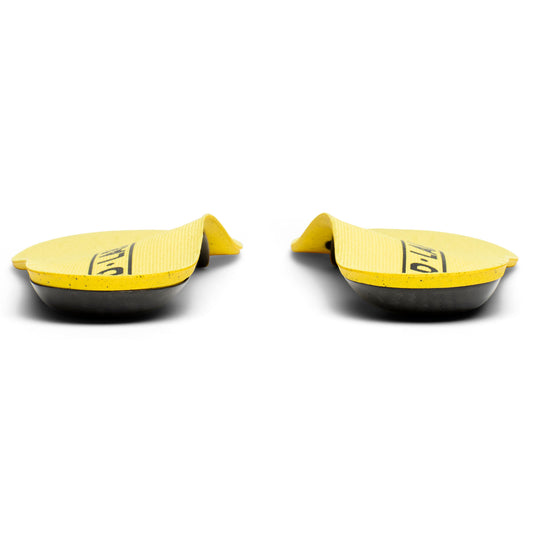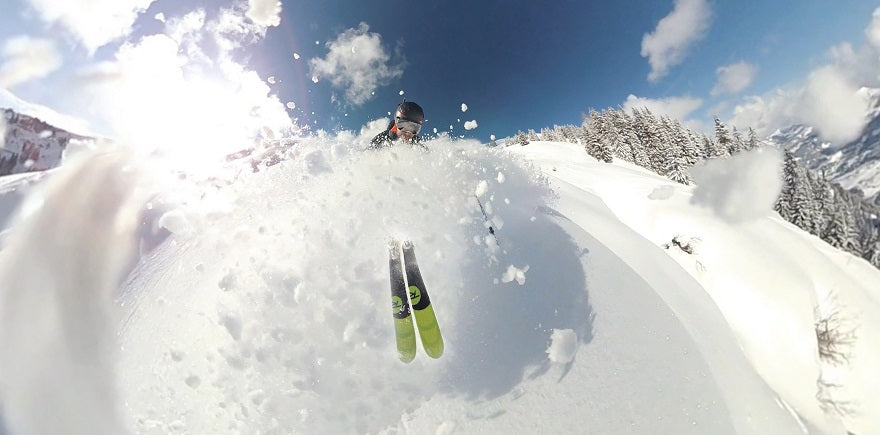
One Thing You Can Do To Ski Better
A day on the slopes can be expensive, which means you definitely want to make the most out of your day. One of the best ways to do that? Add a pair of the best ski boot insoles to your ride. They'll help keep you skiing longer, and can also help you ski better.
The Basics:
Ski boots have the critical job of communicating your thoughts to your skis, keeping your feet warm and comfortable, and helping you perform better on the slopes. But even the best ski boots don't work unless they fit perfectly.
Most ski boots feature heat-moldable liners to fine tune the fit, however these liners don't improve contact underfoot. To get better contact, you need ski boot insoles.
When you ski, the forces on your feet are substantial. The best insoles for ski boots are just as substantial and do not easily deflect in the arch area.
Effective ski boot inserts prevent arch collapse helping you carve turns, and minimize buckle pressure. They also make your feet warmer and more comfortable.
Need to Know
Whether you’re carving groomers under the lift or earning your turns in the backcountry, one of your biggest skiing challenges is getting commands to flow from brain to foot to ski to snow. The weakest link is often the connection between your foot and your ski. Ski boots often don't fit as well as they should.
You chose your ski boots for the combination of flex, fit, and comfort. But how much does that combination help you if the contours of your feet don't match the contours of your boots?
As board-certified Pedorthist and master bootfitter Bob Egeland says, "You marry your boots, you date your skis. You have to get your boots dialed in."
Table of contents
How Do Ski Boots Work?
You ask a lot of your ski boots. You expect them to do the difficult job of holding your feet completely still while allowing your toes room to move. They must allow your ankles to flex forward, but not side to side. Finally, they have to keep your feet warm and comfortable in cold weather.
They do this with a hard, molded shell and a firm, foam liner. The hard shell closes with high-leverage buckles that clamp your feet in place. Here’s the rub:
- As your foot overpronates in a turn, the arch flattens and your foot gets longer. With a lower arch, your foot can now slide forward, reducing the great fit that you had in the ski boot shop.
- Tightening the buckles over your instep to try to prevent foot movement only creates more discomfort. The best fitting ski boots do not need extreme pressure to keep your feet in place.
Strong Arch Support Minimizes Pronation
Strong ski boot arch support lets you reduce buckle pressure without losing performance. In addition, arch support in your ski boots reduces foot fatigue. The muscles in your foot do not have to try to hold your arches up during each turn.
Spreading the pressure over a greater area on the bottom of your feet also adds to your comfort. Ski boot insoles can do wonders for your comfort and ability on the slopes.
Improve Your Fit With Ski Boot Insoles
Any professional ski boot fitter will tell you that upgrading your ski boot insoles will make a dramatic difference in both your skiing ability and your comfort. There are two reasons for this:
- The factory insoles in all ski boots are generic. They’re made to the lowest common denominator of arch contour (low), so they won’t be too uncomfortable for anyone. No boot company wants to lose several hundred dollars in sales because the arches in the boots were too high. The boot company is depending on after-market ski boot insoles to allow the boots to rise to their full potential.
- In the arc of a turn, your feet experience a pressure of 3-4 times your body weight. Without proper support from ski boot inserts, this pressure flattens your arches, putting your feet into an overpronated position. Overpronated feet lose their ability to effectively transfer power, but even more importantly, they make boot fit problematic. Adding ski boot footbeds can help.
Ski Boot Arch Support Inserts Make You A Better Skier
To understand the huge impact insoles for ski boots can have on your performance, just do this simple exercise. It will show you what happens to an unsupported foot in the middle of a turn.
- Take off your shoes and socks and stand with your feet shoulder-width apart as you would when skiing.
- Bend your knees forward as you would on the slopes.
- Push your knees to the left as you would in the middle of a turn.
- Look at the arch on your right foot.
It has collapsed, leaving your foot in an overpronated position. Your foot doesn't have any strength when it is in this position. So imagine a real ski turn where the force is multiplied. Now you can see why arch support makes such a difference in improving your ski performance.
Supporting the arch and eliminating overpronation with ski boot inserts puts your foot in a powerful position, allowing it to exert maximum pressure on the edge of your ski.
Choosing the Right Ski Boot Insoles
Now that you get how important the right insoles for ski boots are to your day on the slopes, you'll need to narrow down all of the options available. Like any piece of gear, investing in quality will pay dividends down the road.
After-Market Ski Boot Footbeds
The first rule of thumb to buying ski boot insoles is to avoid soft, foam insoles or inserts that are heat molded to your feet. While these types of insoles feel good initially, they lack the structural integrity your feet need to get support during rigorous skiing. Look for ski boot insoles with a firm arch support that is covered with a foam layer for comfort.
The best insoles for ski boots will have a structure that includes:
- A deep heel cup – Holds the heel securely in place, limiting rear foot motion.
- Strong support – The forces on your feet are large, and you need a footbed that can stand up to the pressure. In this situation, firm is better than soft.
Remember, ski boots are sized shorter than regular shoes, and are often narrow at the heel. Make sure that the insoles you purchase are sized appropriately.
Custom Orthotics
Some people have foot abnormalities so extreme that custom (or prescription) orthotics are the best solution. A fully custom pair of ski footbeds is often $250 - $600. If this is the solution for you, pick an experienced technician who knows both feet and ski boots. Make sure that modifications are included in the base price. It can take more than one try to get it right.
Get The Most Out Of Ski Boot Insoles
For most people, custom orthotics are unnecessary. If you're one of the majority of people who only need an over-the-counter insole, find one that offers medical-grade support at a wallet-friendly price. Drugstore inserts won't do the trick when it comes to supporting your arch properly.
You'll know if an insole has enough arch support for you by doing a quick test: If you can easily deflect the arch toward the floor with your fingers, the insole lacks the power to improve your skiing.
The best ski boot insole will fit you flawlessly. That means the arch of the insole should contour to the arch of your foot. Your arch isn't one size fits all, and your insole shouldn't be either. Look for an insert that offers multiple arch height options.
For less than the cost of most lift tickets, a pair of arch support insoles that offer full foot contact will allow you to feel the edges of your skis, even under your arches. This increased sensitivity will improve your feel for the snow and control of your skis.
When your foot is supported in your boot, less buckle pressure is needed to hold it in place. That means your runs will be more comfortable and your feet will stay warmer. Now that’s a great day on the slopes.
Questions? Drop us a line at hello@treadlabs.com. We're here to help.


